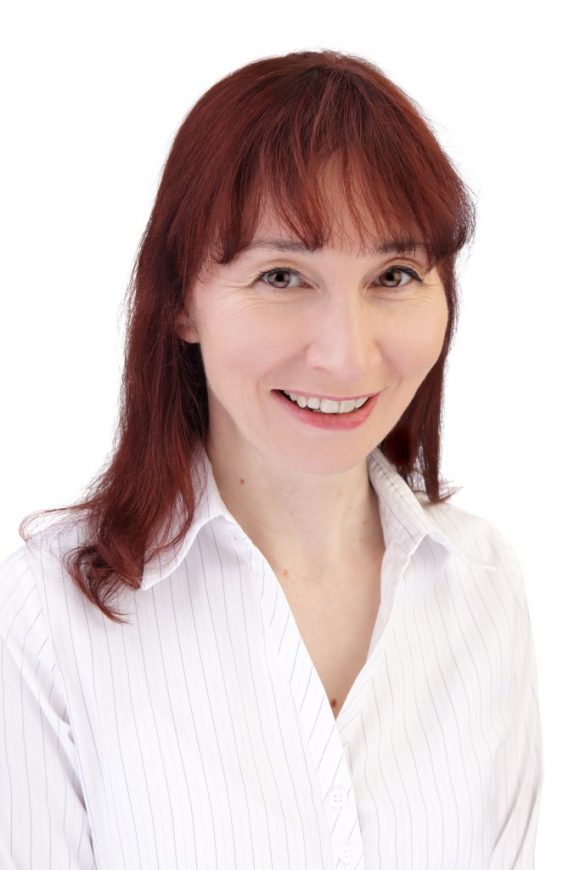Big Help from Big Data
The technological revolution of 4IR will undoubtedly change the way we work, live, learn, relate to one another and then some. The potential of disruption is great, but has a key dependency – data. Reyana Nacerodies speaks to thoughtleader and data strategist, Jennifer Stirrup, about how data is already helping people beyond organisational efficiencies.
Big data has converged with a number of industries in different ways. Volumes of data can be used to address myriad problems in different ways that, for the most part, were not available before the rise of the science of data. CEO of Data Relish, Jennifer Stirrup, is an award-winning, internationally recognised business intelligence expert and data strategist who believes that Big Data offers a big help for organisations and individuals alike.

Jennifer’s known as a Data Whisperer, diversity as well as technical community advocate, public speaker, blogger and published author who is currently writing on Microsoft Power BI. Recognitions such as 10 Female Influencers You Should Follow, Microsoft MVP Award and Top 10 Influential Data Leaders to Follow in 2019, were awarded to her. She founded Data Relish in England to offer solutions on a range of business intelligence, data science and business analytics. Basically, Data Relish helps with data strategy that empowers an organisation.
Big data defined
Big data is data defined by the three v’s – variety, volume and velocity. The interconnectedness of data and technology suggest a variety of information, available en masse at an ever-increasing pace. Simply, big data is larger, more complex data sets, especially from new data sources.
Data science defined
Data science is the study of data. It involves developing methods of recording, storing, and analysing data to effectively extract useful information. The goal of data science is to gain insights and knowledge from any type of data.
Here, Jennifer answers some questions:
How do you encapsulate all that you do?
I regard my role as helping people through their data so I try to make sure that I have a good impact in organisations. Every single organisation on the planet has data. So, because of that, there’s plenty opportunities to help people. And that can mean different types of help. It can make people more productive so that they can go home earlier, for example, you don’t have to spend your time working late to do activities that are very manual.
So, it’s not about getting rid of jobs at all, it’s about trying to make sure that people are supported in their jobs. I believe that artificial intelligence can help us make more of our human capabilities, things that we are so good at like being imaginative and creative, resourceful and looking at things with a different lens.
The thinking about the data industry is comparatively new. How did it start for you?
I’ve been in the industry for 23 years and I’ve helped lots of companies during that time, it’s a really good place to be. I started by being really excited by Artificial Intelligence and started learning about it. I originally wanted to do Psychology and during my course I learned about neuronets and different ways that computers could be used in order to help model how humans think and our capabilities. I realised that that’s where my passion lay because I thought, ‘could we ever model human behaviour in a computer?’ and ‘what would it tell us about ourselves?’
In your view, how do you see the role of data in modern day organisation?
I’ve always liked being surprised by data and I love finding things that no one else has ever found before.
I think that as a rule, data is crucial to every aspect of our business life – if you don’t have data, you don’t have your business because you don’t know who your customers are, you don’t know your products, your prices, your transactions, and that’s just the internal data It means you also don’t have the external data which will be useful as well such as trends in industry or predictions, even weather patterns.
I see businesses don’t always value the data they have in their organisation and I see that sometimes they get mixed up between the cost of the data and the value of the data. They start to think about that this report will cost me so much money to make or the time it will take to make the report. And, it’s easier to think about the cost of making the report than to think about the value that you get from understanding the data. So, I do see that the cost versus value misunderstanding is very prevalent in modern day organisations and people can sometimes be unwilling to take a step of faith and look at data.
It’s about being very self-aware that we don’t always get things right and as humans we have biases where we want to be right all the time, and it’s hard for us to question ourselves. What data does is that it makes us question ourselves so it doesn’t always put us in a very comfortable place. So, I think it’s a brave person who looks at the data instead of going on their assumptions or their gut instinct. It’s not to say that analogies and insight are not important because it’s equally crucial, but the data does help you to think outside that box.
How has a data view helped your clients?
I did some work for the London Council. I helped them to use their data in order to help understand homelessness better in their geographical area and found some fascinating things.
Homelessness is a real tragedy. We often think about the homeless person as being the man living on the street, but the data showed us that the most likely person to be homeless was actually women and children who were victims of domestic violence – they tend to leave home under very sudden and unexpected circumstances, very often they just run away. They have no clothes with them, they have no toys for the children. So, what we wanted to understand was how do you better help people who become homeless and how can you predict who becomes homeless so we can help them better.
Furthermore, when people leave home very quickly especially because of domestic violence, they’re put in emergency accommodation and that type of accommodation is really not suitable for children – it’s frightening, it’s bare, they don’t have toys, they don’t have space or a garden or anything like that. The emergency accommodation might be six miles away from their school.
If you’re in London, for example, and you’re sent to emergency accommodation, that could mean lots of tube and bus trips for the mother to take her child to school and she may have to drag a smaller child on that journey with her. And it’s a horrible journey to ask a family to do, and, because the family is in a difficult circumstance, sometimes they just don’t go to school because it’s too hard for the child to get there particularly if the mother is working as well and they’re just living in some real emergency accommodation.
With that in mind, the power of digital transformation really led to two aspects – one was the family and their experience, and the other for the council who actually gets to take preventative measures to actually stop people becoming homeless and that means it’s more productive in its mandate, offers a better service and saves costs. Understanding the situational context helped plan assistance and services better. It means they can find better accommodation for people before they leave and help the family, and that’s just one example of the powerful impact of the data.
Can you share a client who is doing interesting things with data?
One organisation I work for was the NHS, the London Strategic Health Authority. We’re doing some interesting things helping understand and share research that helps them to treat patients better. One system we helped to design is called the Clinical Records Interactive Search (CRIS) system. It takes anonymised patients’ data and makes it available to universities who can use anonymous data to try and understand behaviour and patterns of treatment for people with mental health issues.
And that’s a very important issue. When patients, for example, have a mental health issue, they won’t tell their family members because they are embarrassed and ashamed. Sometimes the stigma of mental health means that people find it hard to seek help. So with this particular system, we’re trying to find ways to help people better and they’re not looking at individuals, they’re looking at aggregated data.
How do you see data and, indeed, the use of data evolving as we progress through the Fourth Industrial Revolution?
I think people will start to use more sensor and Internet of things data. So, I think that’ll be the next step. And again, it’s not just about the technology but it’s an opportunity to help people.
Say for example, we take the NHS again. You could look at putting a sensor in a bed to identify when the patient is in and out of bed to see if they’ve wandered. If they have dementia, for example, you can start to understand better who the patient is, and monitor their movements because with the dementia people do wander. Dementia patients are allowed to stay at home so you could use a pendant or similar device to track them. Treatment at home saves the NHS money but can be made even easier in this way.
I think you’ll also see more adoption and there’ll be more connections. That’s another big step I see. The use of data will be about making the data join up better so if people are using a shopping service, for example, the shopping service can try and understand better when the person is likely to be at home so that they can get their shopping delivered. Or if the person is on their way back home from work and the traffic is bad, the shopping service will know to delay sending the shopping to the person’s home because they’ve added traffic information to their data. They can proactively connect with the customer and coordinate that.
I think we tend to think of data in silos. We have the firm’s data or the marketing team’s data or finance data, but when you start to put the data together and join it up better, you start to get better insights.
Main photo by Charles Deluvio on Unsplash.
